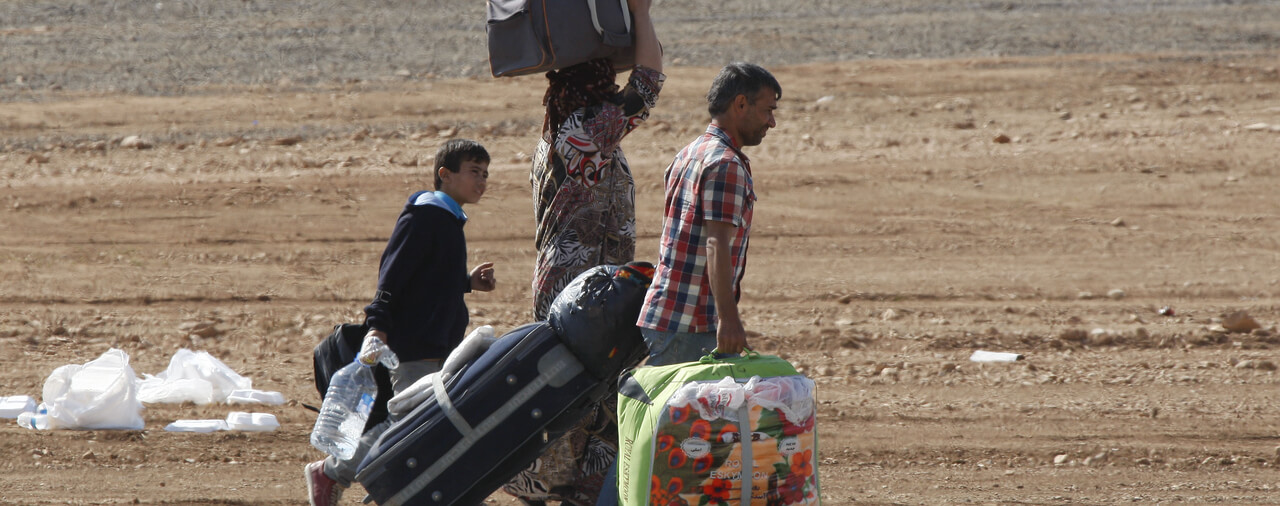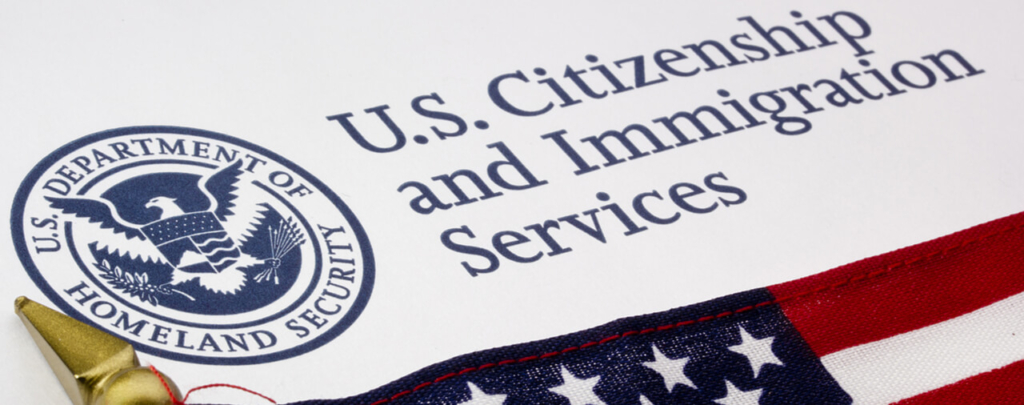- Update
- Introduction
- Effective Date
- 120-Day Suspension on Decisions for Refugee Status
- Reduction of Refugee Admissions for Fiscal Year 2017
- Resumption After 120 Days
- Conclusion
Update
(June 26, 2017 Update): On June 26, 2017, the Supreme Court of the United States lifted the injunction against sections 6(a) and (b) of this Executive Order with regard to refugee applicants who lack a bona fide connection to a person or entity in the United States. The injunction remains in place with regard to those refugee applicants who have such a bona fide connection. Please see our full article to learn more [see article]. The Court will hear the case in October.
On March 15, a Federal Judge from the United States District Court for the District of Hawaii issued a temporary restraining order (TRO) against the implementation of sections 2 and 6 of the Travel Order. The TRO will prevent the suspension of entry provisions in section 2 and the suspension of refugee travel/determination provisions in section 6 from taking effect on March 16, 2017. Please see our short post to learn more [see article]. We will update the site as the litigation continues.
Introduction
On March 6, 2017, President Donald Trump signed an Executive Order titled “Executive Order Protecting the Nation From Foreign Terrorist Entry Into The United States” (“Travel Order”) [PDF version]. This Executive Order revokes and replaces an Executive Order of the same name issued by President Trump on January 27, 2017 [PDF version].
In this article, we will examine the new Travel Order in detail as it pertains to refugees, specifically to the 120-day suspension of refugee travel. Please see our separate articles examining the new Travel Order’s provisions that temporarily suspend the entry of alien nationals of six countries [see article] and suspend the Visa Interview Waiver Program [see article], along with our article on the portions of the Travel Order that explain its purpose and provide for changes to vetting of aliens going forward [see article]. We have also posted an article explaining the differences between the new Travel Order and the original [see article].
To learn more about the original Executive Order that has now been revoked, please see our legal overview of the original Order [see blog] as well as an analysis and opinion piece on the federal court litigation regarding that Order [see blog].
In addition to the text of the Travel Order itself, we will rely upon a March 6, 2017, Department of Homeland Security (DHS) document regarding the Order titled “Fact Sheet: Protecting the Nation From Foreign Terrorist Entry To The United States” (“DHS Fact Sheet”) [link], as well its FAQ titled “Q&A: Protecting the Nation From Foreign Terrorist Entry To The United States” (“DHS Q&A”) [link]. Please also see a Department of State (DOS) document titled “Executive Order on Visas” (“DOS Announcement”) [link].
Finally, for additional perspective on the new Travel Order, please see our blog with a video of remarks by Secretary of State Rex Tillerson, Attorney General Jeff Sessions, and Secretary of Homeland Security John Kelly [see blog].
Effective Date
Section 14 of the Travel Order makes the “effective date” of the order 12:01 AM, eastern daylight time on March 16, 2017. At that time, all of the provisions of the Travel Order will take effect. Section 13 of the Travel Order states that the original Travel Order, Executive Order 13769 of January 27, 2017, shall be revoked as of the effective date of the new March 6, 2017 Travel Order.
We will continue to make reference to the effective date of the new Travel Order often, so please remember it as we examine the provisions of the Travel Order in this article.
120-Day Suspension on Decisions for Refugee Status
In section 6(a) of the Travel Order, President Trump directs the Secretary of State to suspend the travel of refugees into the United States under the United States Refugee Admissions Program (USRAP) for 120 days after the effective date of the Travel Order. Furthermore, he directed the Secretary of Homeland Security to suspend decisions on applications for refugee status for the same period.
The suspension of travel and final decisions on refugee applications does not necessarily apply to interviews. At Q/A26 of the DHS FAQ, the DHS explains that the DHS and DOS will continue to conduct interviews “as appropriate and consistent with the Executive Order.” However, except in limited circumstances that we will discuss [see section], the DHS will not make final decisions on refugee applications during the 120-day suspension period.
Unlike the January 27, 2017, Executive Order, the new Travel Order does not include an indefinite suspension of refugees from Syria. This means that for the time being, Syrian refugee applicants will be treated similarly to other refugee applicants.
Cases Where Travel Order Does Not Apply
Certain refugees will be exempted from the Travel Order.
First, section 6 of the Travel Order states that the suspension “shall not apply to refugee applicants who, before the effective date of this order, have been formally scheduled for transit by the Department of State.” In accordance with section 6 of the Travel Order, Q/A10 of the DHS FAQ explains that first-time arrival refugees with valid/travel documents will be allowed to travel to the United States only if their travel was formally scheduled by the DOS.
Second, section 12(e) makes explicit that the Travel Order “shall not apply to … a refugee who has already been admitted to the United States…” In Q/A9 of the DHS FAQ, the DHS explains that returning refugees and asylees are expressly exempted from the Travel Order. Therefore, they may continue to travel in accord with the existing requirements for such travel. Please see our full article to learn more about travel for refugees and asylees [see article].
At Q/A27 of the DHS FAQ, the DHS explains that the exception for refugee admission does not apply to Refugee/Asylee Relative Petitions (Form I-730) cases where a family member is requesting a beneficiary to follow to join him or her in the United States. The DHS explains that a family member will only be eligible to come as a matter of course during the suspension period if he or she has a valid visa or travel document at the effective date of the Travel Order (note that individuals who had visas or travel documents as of January 27, 2017, and who had such documents revoked under the original Executive Order, are generally entitled to new travel documents under the January 27 Travel Order [see section].
Limited Exemptions
Section 6(c) of the Travel Order explains that, notwithstanding the 120-suspension, the Secretary of State and the Secretary of Homeland Security may jointly determine to admit individual refugees on a case-by-case basis. In order to do so, the Secretaries must determine that the entry of an individual refugee is in the national interest and does not pose a threat to the security or welfare of the United States. Section 6(c) offers two examples of scenarios where such a waiver may be found to be appropriate:
1. The individual’s entry would enable the United States to conform its conduct to a preexisting international agreement or arrangement; or
2. The denial of entry in an individual case would cause undue hardship.
Unlike the January 27, 2017 Executive Order, the new Travel Order does not contain a provision for giving preference to individuals seeking refugee status based on religious persecution from countries in which they are the member of a minority religion.
Reduction of Refugee Admissions for Fiscal Year 2017
In section 6(b) of the Travel Order, President Trump proclaimed, under section 212(f) of the Immigration and Nationality Act (INA), that the entry of more than 50,000 refugees in fiscal year 2017 would be detrimental to the interests of the United States. Accordingly, President Trump suspended any entries in excess of 50,000 unless and until he determines that additional entries would be in the interest of the United States. Provided that President Trump does not rescind this proclamation, it will have the effect of significantly reducing the number of refugees admitted in fiscal year 2017 from the target set by the outgoing Obama Administration. Although 50,000 refugees is in line with the number of refugees admitted in most years of the George W. Bush Administration and early in the Obama Administration, the United States admitted 69,909 refugees in fiscal year 2015 [see blog] and 84,995 refugees in fiscal year 2016 [see blog].
Please see our full article to learn about Presidential Proclamations issued under section 212(f) of the INA in detail [see article].
Resumption After 120 Days
President Trump directed the Secretary of State to resume travel of refugees into the United States 120 days after the effective date of the Travel Order. At that time, President Trump directed, the Secretary of Homeland Security will only resume making decisions on refugee applications for stateless persons and for applicants from countries for which the Secretary of State, Secretary of Homeland Security, and the Director of National Intelligence have jointly determined that the additional vetting procedures implemented under the Travel Order “are adequate to ensure the security and welfare of the United States.”
Conclusion
The new Travel Order retains the January 27 Executive Order’s suspension of the USRAP. However, it provides for more clear exceptions than did the original Executive Order. Refugee applicants who are or who may be affected by the Travel Order should consult with an experienced immigration attorney for guidance. An immigration attorney will be able to assess the applicant’s case and determine whether he or she may be eligible for relief under the exceptions provided for in the new Travel Order.
Like the original Executive Order, the new Travel Order will likely be subject to litigation in the federal courts. One aspect of the Travel Order that is unlikely to face scrutiny is the President’s decision to cap refugee admissions for fiscal year 2017 at 50,000. Please follow our website for updates on any litigation surrounding or changes to the provisions of the Travel Order.
Furthermore, even if the Travel Order is allowed to take effect in full, it is unclear what the effect of it will be after the 120-day suspension period ends. The Travel Order instructs the relevant departments to devise improved vetting procedures based on country conditions for future refugee processing and admissions. It is unclear what the effect of these new procedures will be going forward. We will update the site as soon as more information is known.
Please see our category on asylees and refugees to learn more about refugee immigration issues in general [see category].



-1024x405.jpg)
-1024x405.jpg)
